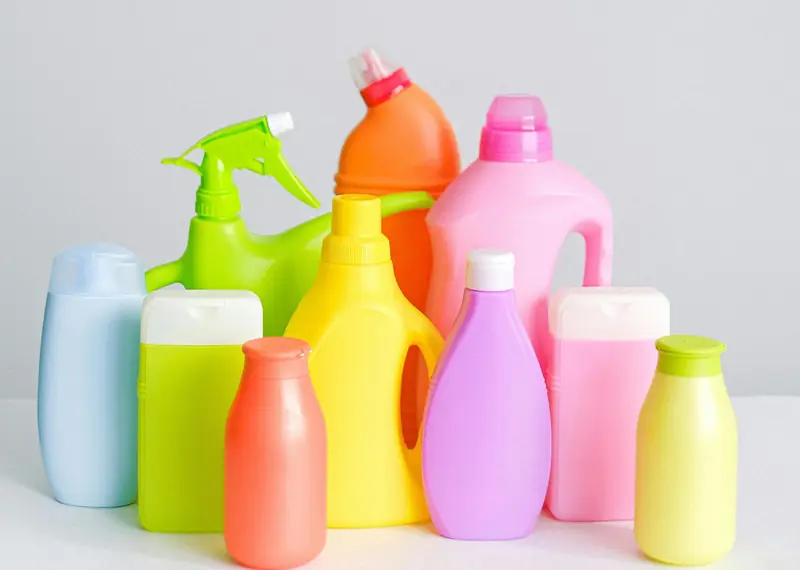
Even old and stubborn stains can be successfully removed at home without resorting to toxic household chemicals.
Dirt and Dust
Start by cleaning the stained area with a damp brush. Once the stain dries, wash it with warm soapy water. If the stain persists, use a vinegar solution (3 tablespoons of vinegar per 0.5 liters of water). For items that cannot be washed, treat the stain with a 10-12% hydrogen peroxide solution.
Perspiration
Perspiration stains contain inorganic salts (sulfates, phosphates, etc.), organic acids, urea, fat, cholesterol, and more. These substances can damage wool and silk fibers and break down fabric dyes. To remove these stains, use a solution of hyposulfite (1 teaspoon per 1 cup of water) and rinse with warm boiled water. For sweat stains on wool, use a strong solution of salt and ammonia (1 teaspoon per 1 liter of water). For silk linings, treat sweat stains with a mixture of ammonia and denatured alcohol (in equal parts).
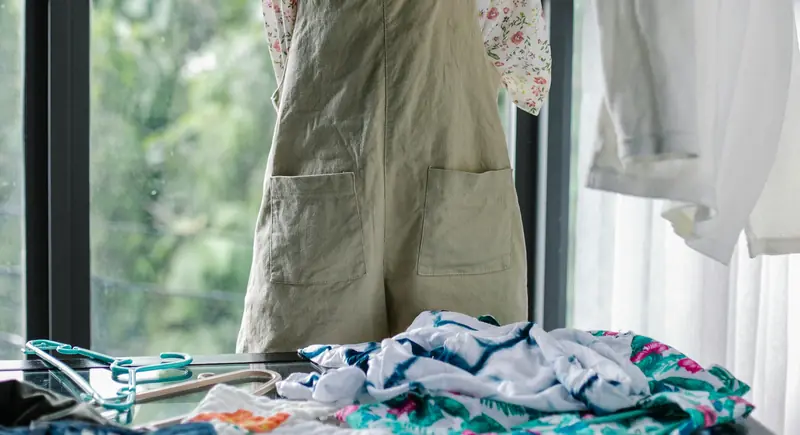
Blood
In addition to protein, blood contains fats, carbohydrates, dyes, and nitrogenous substances (amino acids, etc.). Blood stains should first be rinsed with cold water and then with warm soapy water. Before washing, soak the fabric with blood stains for a few hours. For old blood stains, first wipe with an ammonia solution (1 teaspoon per 1 cup of water), then with a borax solution (1 teaspoon per 1 cup of water), and finally wash in warm water. For delicate silk fabrics, remove blood using starch mixed with cold water, like a dough. Afterward, shake off the starch and wash the item.
Grease and Oil
For greasy spots on collars, wipe with a cotton pad soaked in a salt solution with 10% ammonia (5 g of salt per 25 g of ammonia). Sprinkle salt on the grease and wipe with bread. Change the salt until the stain disappears. To remove fish oil stains, use water mixed with vinegar. For grease stains on synthetic fabrics, sprinkle with starch and rub with a damp cloth. After drying, brush off the starch. For velvet, gently tap the grease stain with a linen bag filled with sand. Fresh greasy and oily stains on light fabrics can be removed by immediately sprinkling the area with chalk powder (leave for 2-4 hours and then shake off). Oil stains can be treated with kerosene, followed by washing the item in warm soapy water. As we can see, there are many recipes for removing greasy stains for various situations.
Milk and Eggs
Egg stains should be treated immediately (as the proteins turn into insoluble compounds): remove them with water mixed with ammonia or a glycerin-ammonia mixture. Heat glycerin to 40 degrees Celsius, apply it to the stain, scrub with a brush, leave for 20 minutes, and then wash the item. For milk and ice cream stains on wool, rinse immediately with soapy water or glycerin. For colored fabrics, apply a mixture of 2 tablespoons of glycerin, 2 tablespoons of water, and a few drops of ammonia. Place the stained item between two layers of white cotton fabric and iron.
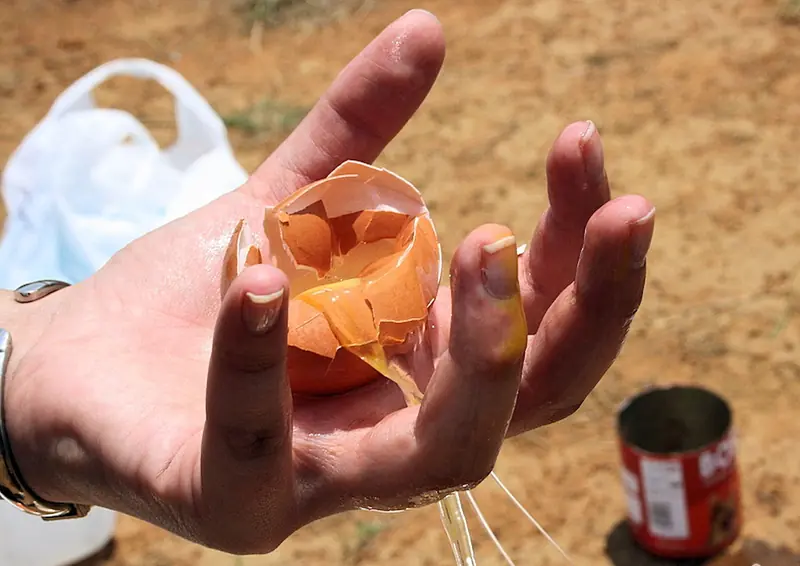
Resin
Fresh oil-resin stains can be removed with gasoline and solvents, while old tar and oil paint stains require turpentine. For dark wool fabrics, resin stains can be easily removed with turpentine, while for white fabrics, use soapy alcohol. Scrape off the resin stains and soak them in a mixture of alcohol and turpentine (1:1). Iron the fabric through absorbent paper and wipe dry. However, if a halo appears around the stain, only dry cleaning can remove it.
Kerosene
Kerosene stains on wool can be removed with gasoline, while cotton fabrics can be washed with warm soapy water, rinsed, and ironed with a warm iron. For light fabrics, treat kerosene stains with a solution of ammonia and water (1:8).
Tea, Coffee, Chocolate
These stains contain fat, protein, dye, and tannins. They can be wiped with glycerin, an ammonia solution, or rinsed with very salty water. For old stains on white fabrics, use hydrogen peroxide. After 15 minutes, rinse with cold water, wash the item in warm soapy water (½ teaspoon of soda or 1 teaspoon of ammonia per 1 liter of water), and rinse twice in warm and cold water, acidified with vinegar.
Beer, Wine, Berries
Fresh stains can be removed with a paste of water and salt. After half an hour, rinse with soapy water and then rinse again. For red wine and berry stains on colored fabrics, use a mixture of glycerin and raw egg yolk (in equal parts). After a few hours, rinse with warm water. Red wine stains can also be treated with a potassium permanganate solution, and after a few minutes, wipe with a hydrogen peroxide solution (1 teaspoon per 1 cup of water). For white wine, beer, or liqueur stains, use a solution of 5 g of soap and ½ teaspoon of soda in a cup of water. After a day, rinse the mixture with warm water and rinse the item. Such stains can also be treated with ice or washed in cold water. For old white wine stains, use a mixture of white soap, turpentine, and 10% ammonia (ratio 1:2:1). Apply the mixture to the stain, rinse the area in warm soapy water, and rinse in cold water. Beer stains on fabrics can be easily washed out with soapy water. For old beer stains, clean with a mixture of glycerin, wine, and ammonia (in equal parts). Mix them with water in a ratio of 3:1 and wipe the stain.
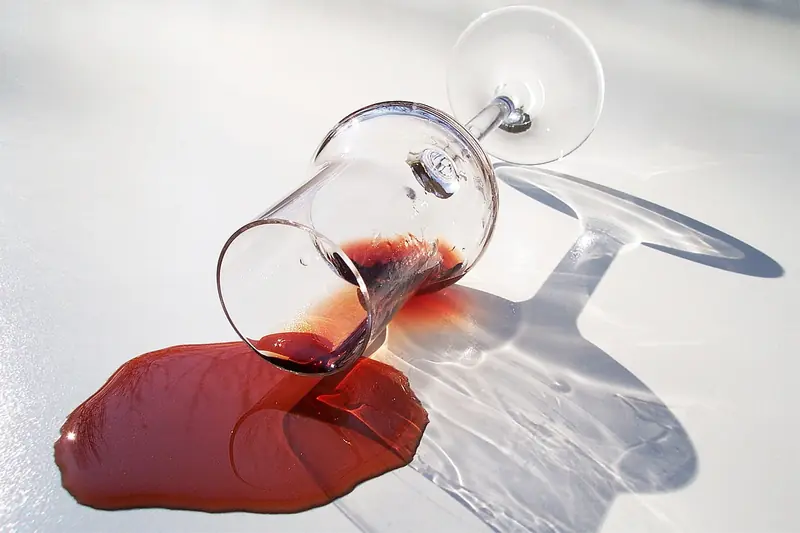
Vegetables, Fruits, Juices
Stains from vegetable and fruit juices can be removed with a paste of laundry detergent or a mixture of glycerin and gasoline (1:1). You can also treat the stain with a mixture of glycerin and vodka (in equal parts) or use heated alcohol or vodka. Old stains will come out faster if you hold the fabric over boiling water and rub with lemon juice or vinegar diluted with vodka. Then, wipe the fabric with a cotton pad soaked in an ammonia solution.
Greens
Stains from greens can be removed with a salt solution (1 teaspoon per ½ cup of warm water), vodka, or denatured alcohol. After removing the stain, rinse the fabric in warm water. For white fabrics, treat grass stains with a 3% hydrogen peroxide solution mixed with a few drops of ammonia.
Oil Paint and Varnish
How to remove paint stains depends on its composition. Oil paint can be removed with turpentine, kerosene, or ammonia. You can apply butter or margarine to the stain and then wipe it with kerosene, turpentine, or gasoline (afterward, the item should be washed). An oil paint stain can be removed with a mixture of gasoline soap and turpentine (ratio 1:1). Rub the mixture into the stain, scrape off the dissolved paint, and wipe with a damp cotton pad. For old stains, soak with turpentine and clean with a strong solution of baking soda (rinse the fabric with warm water at the end of the process). Varnish stains can be removed with wine alcohol or a mixture of denatured alcohol and acetone in a 1:1 ratio.
Ink
Ink stains are easier to remove if you sprinkle them with salt and drizzle with lemon juice. Then, rinse the fabric several times. Ink stains can also be treated with glycerin. Soak the fabric in glycerin for at least an hour, then rinse in salted warm water or wash in warm soapy water. Fresh ink stains can be removed with sour warm milk. Soak the fabric in it for a few hours (change the milk if the stain is large) and then wash in warm soapy water with added borax or ammonia. You can also treat the stain with a solution of ammonia and baking soda (1 teaspoon of ammonia and 2 teaspoons of baking soda per cup of water). For silk fabrics, apply a paste of mustard and leave it for a day, then scrape off the mixture and rinse the fabric in cold water. When removing ink stains, it’s important to first create a protective outline with melted paraffin and petroleum jelly (in equal parts), otherwise, the stain will spread. After removing the stain, wash the fabric with baking soda, and iron the protective paraffin circle with a hot iron through a paper napkin, changing it until all the paraffin is removed.
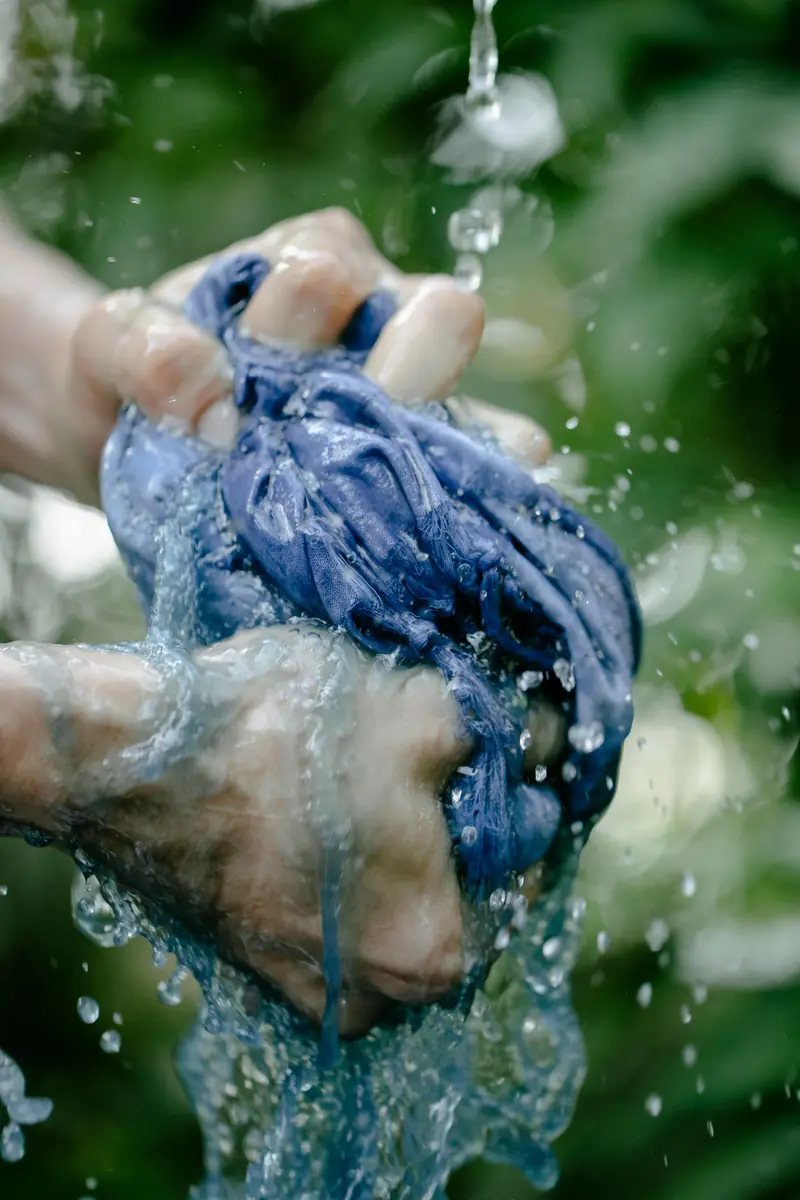
Wax
To remove wax stains, scrape them off. Cover the stained area with a damp cloth, several layers of absorbent paper (napkins), and iron with a hot iron, changing the paper until the stain disappears. For wax and stearin stains on velvet and plush, use alcohol or turpentine (do not use an iron in these cases).
Soot
A fresh ash stain can be cleaned with a piece of bread or washed in warm soapy water. Moisten the stain with turpentine, rinse with soapy water, and then rinse again. For old stains, use turpentine mixed with egg yolk until it reaches a sour cream consistency (heat the mixture by placing the jar in a pot of hot water).
Burn from a Hot Iron
For a burn mark from an iron, apply a paste of grated onion for one to two hours, then rinse in cold water. You can also moisten the stain with boric acid and rinse the fabric in cold water. For white fabrics, remove the burn mark with a mixture of a few drops of ammonia, 1 teaspoon of hydrogen peroxide, and ½ cup of water.
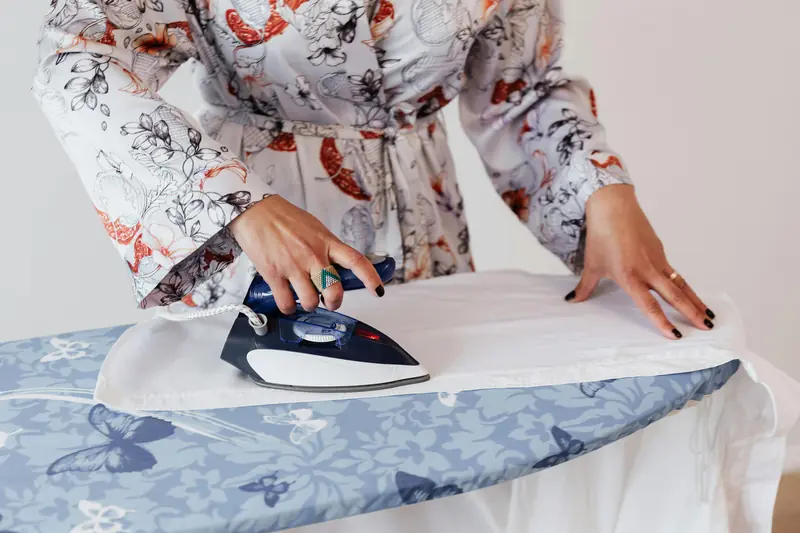
Cosmetics
To remove lipstick stains from clothing, use borax, wash with soap, and rinse in clean water. For jersey items, treat the stain with a thick paste of gasoline and talc, then wipe with hot glycerin. For stains from cosmetics on dyeable fabrics, use a mixture of ether and turpentine (1:1). Hair dye stains can be removed with a mixture of hydrogen peroxide and ammonia (1:1). To remove nail polish stains, place absorbent paper on the stain and moisten the reverse side of the fabric with acetone.
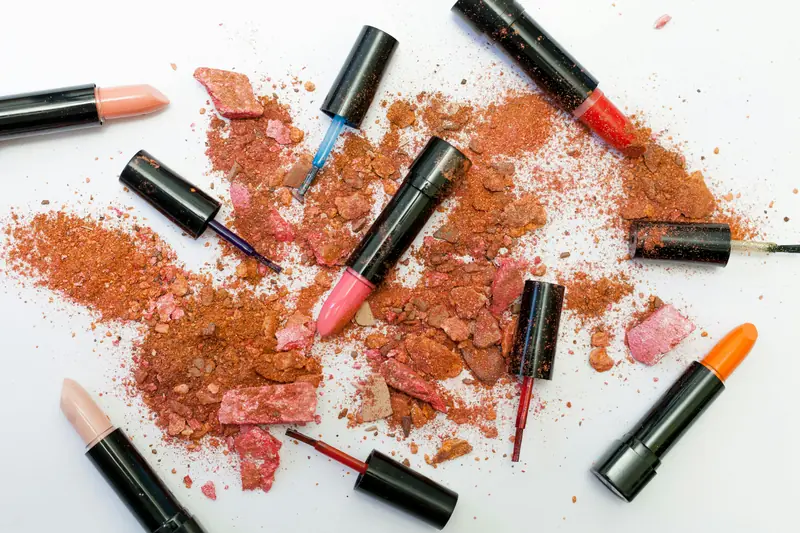
Perfume
Perfume and cologne stains will disappear if you wipe them with alcohol while they are still fresh. For white fabrics, old perfume stains can be removed with a mixture of ammonia and hydrogen peroxide (1:1). For perfume stains on wool, first moisten with wine alcohol or pure glycerin, then wipe with acetone. For perfume stains on light fabrics, sequentially moisten with ammonia, a hydrosulfite solution (4 g per cup of water), and a solution of oxalic acid (5 g per cup of water).
Iodine
For iodine stains, sprinkle with baking soda, drizzle with vinegar, and leave overnight, then rinse in water. You can also moisten the stain with water and rub with starch, then rinse with soap.
Fly Stains
Apply a mixture of ammonia and water (1:10) to the stains. For old stains, soak for a few hours in a soapy solution with a small amount of gasoline. Clean fly stains with a brush soaked in soapy water.
As you can see, stain removal solutions can be found in your own kitchen or medicine cabinet. It turns out that fighting dirt doesn’t have to involve polluting the environment with chemical agents.
